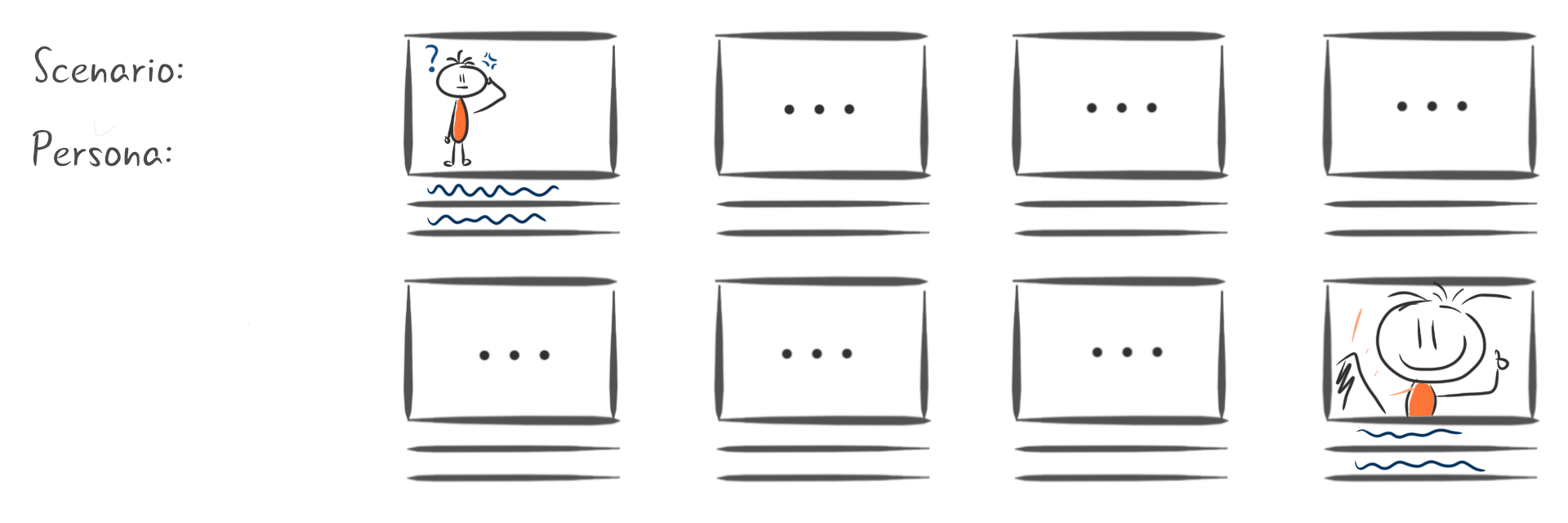
Goal
Description
Instructions
Materials
In design development, the storyboard is used as a creative technique. The storyboard is an element of story-driven design. The storyboard originated in the film and video industry, and it is said to be developed at Disney Studios. Difficult commercials or complex scenes in a movie are initially drawn in each scene through storyboards. Especially in the advertising industry, storyboards can visually transport the idea of a commercial spot very easily and show effects in their mode of action.
Story-driven design
This is exactly what is intended by the so-called story-driven design. In design development, the storyboard is used as a creative technique in teams to develop ideas to tell a specific use case of an idea from the user’s perspective in a visual representation. Its use in larger teams is particularly effective when it is possible to entrust different groups with creating a storyboard. The goal of the approach is to make the idea visible to the user and thus make her or his requirements for a solution visible throughout his or her entire customer journey. With the story-driven design, the creative process’s objective is to develop ideas from the user’s perspective d focus on the user’s needs.
Get your approach visualized
Illustrations do not have to be of high aesthetic quality. It is sufficient to depict the respective scenes of the customer story in schematic form. The tasks for developing a story can be either completely free or guided. As a result, depending on the number of participating groups, different visualised solution approaches for developing and implementing an idea can be found. Using Storyboards, different solution approaches can be developed, which then provide the basis for a well-founded exchange among the participants and a basis for discussion for the subsequent solution development. This method’s great benefit is the strong user-centricity because it quite consistently places the user at the center of all ideas. It offers the chance to collaboratively develop solutions among the involved participants and optimise their solution approaches with the different participants’ questions and suggestions.